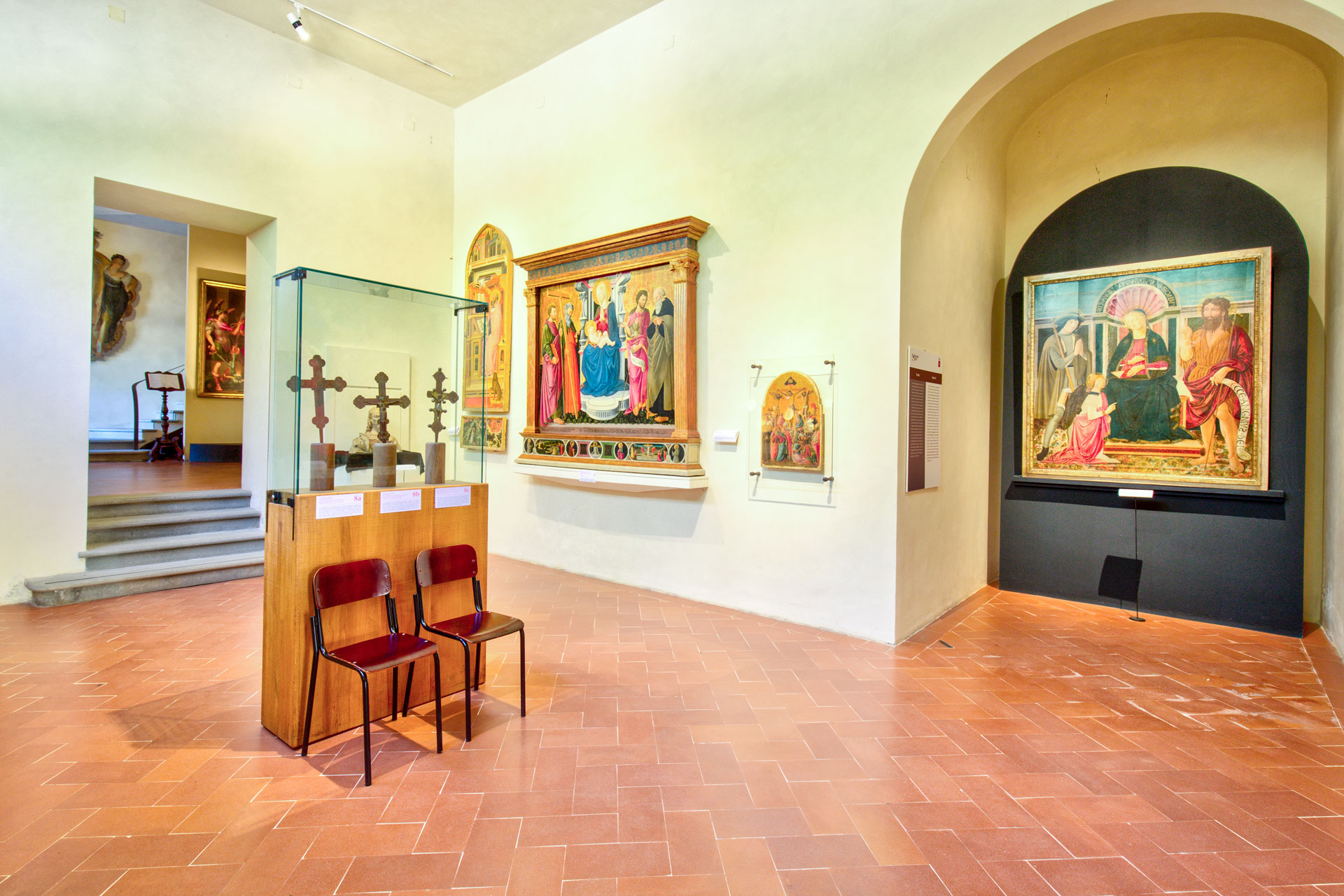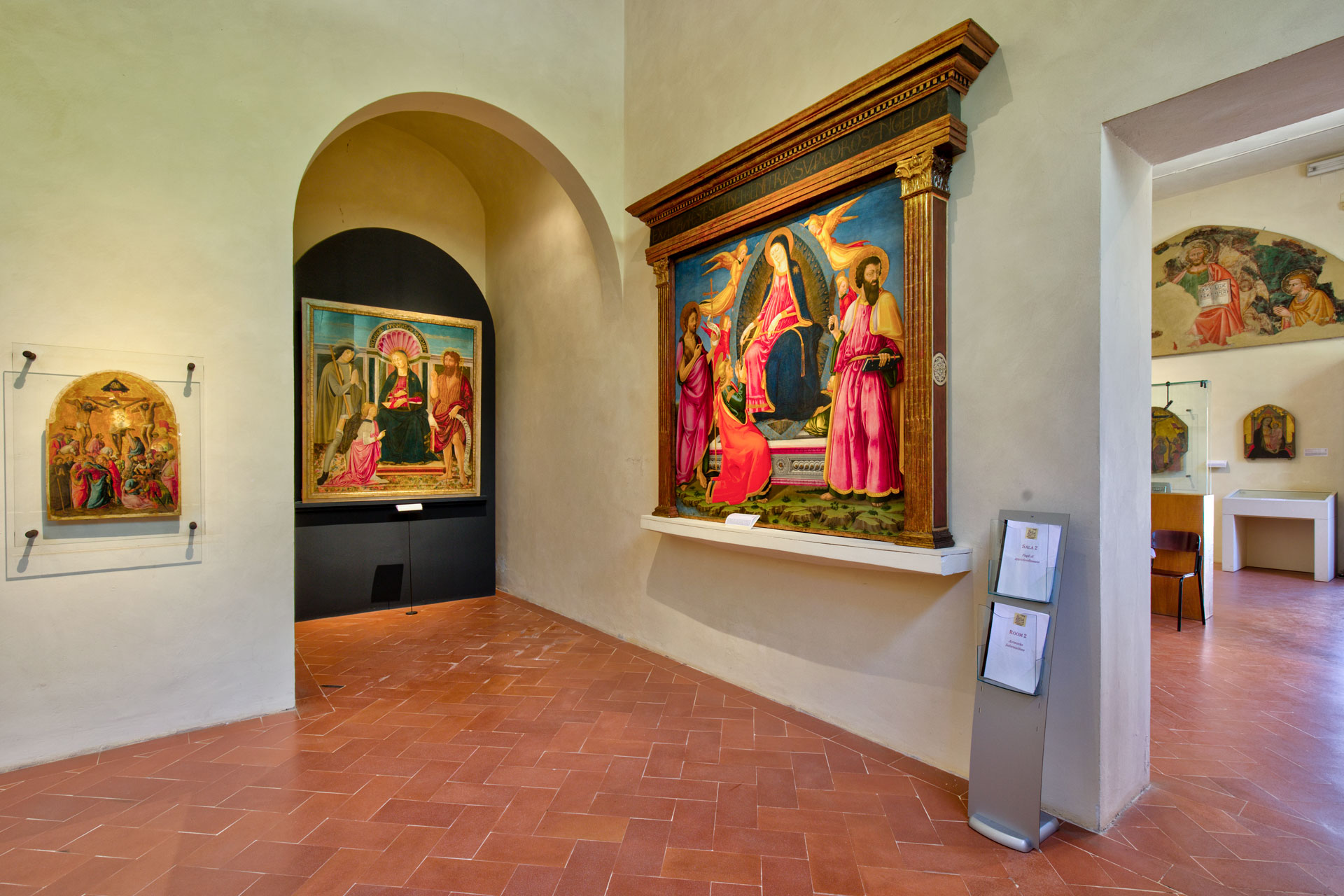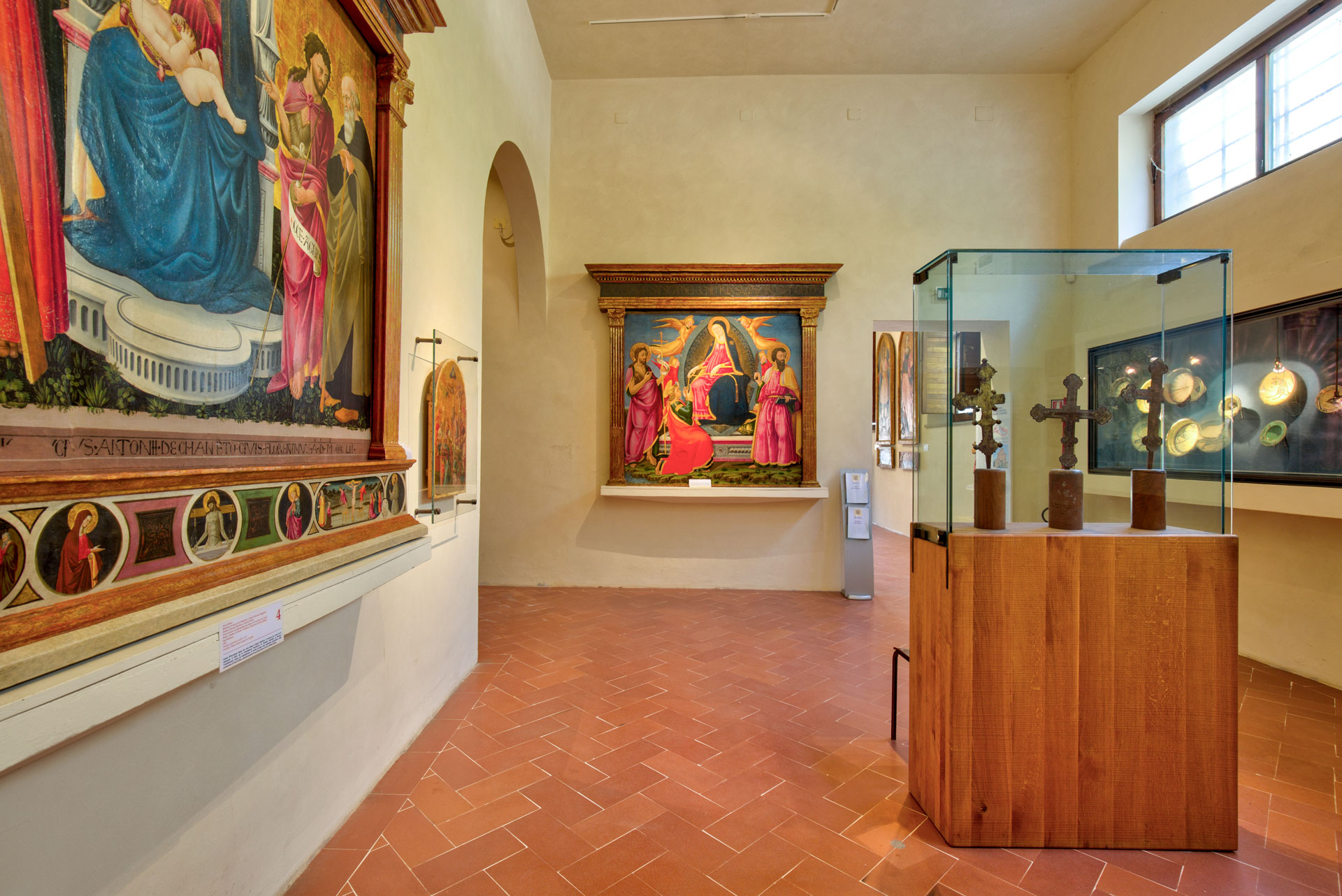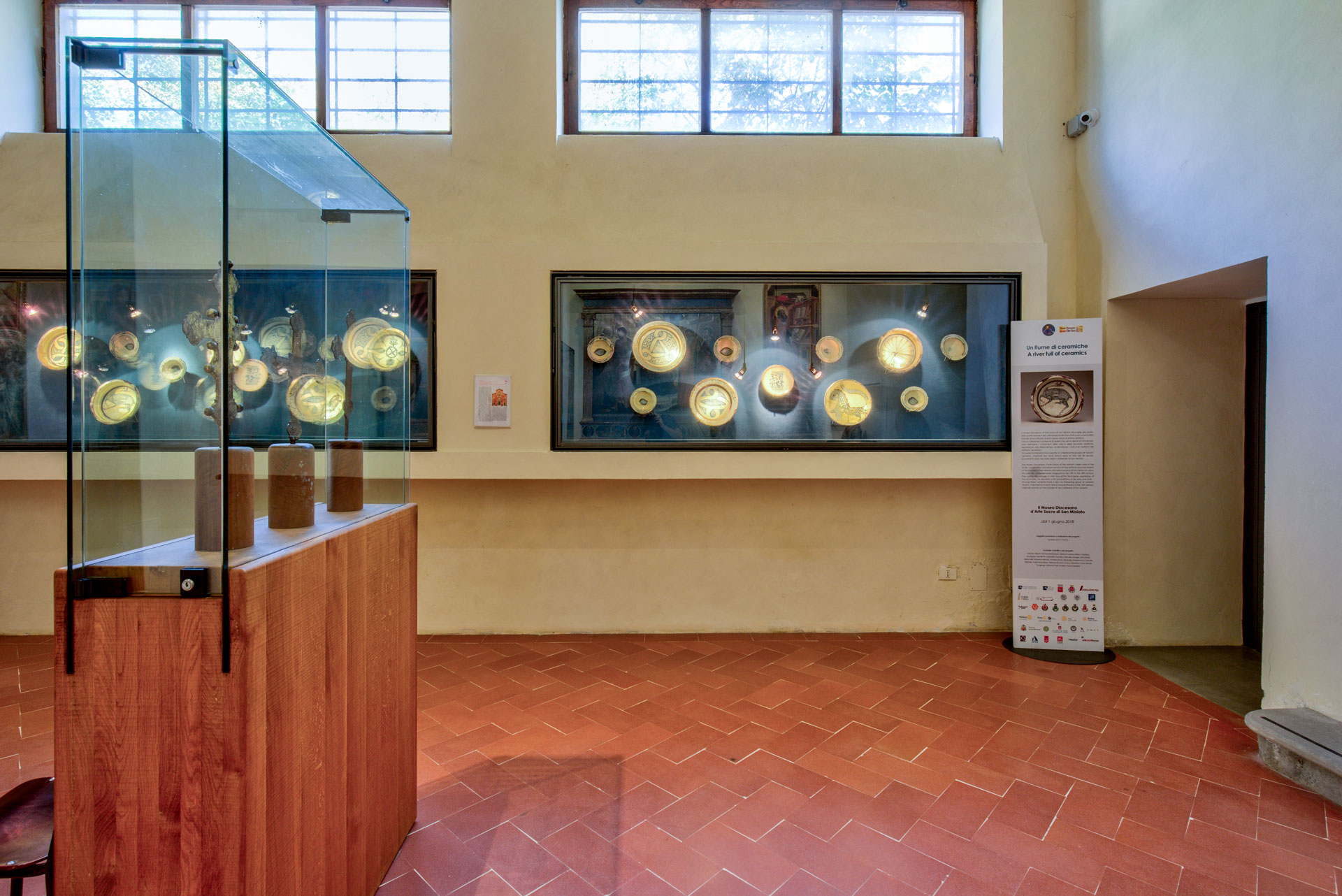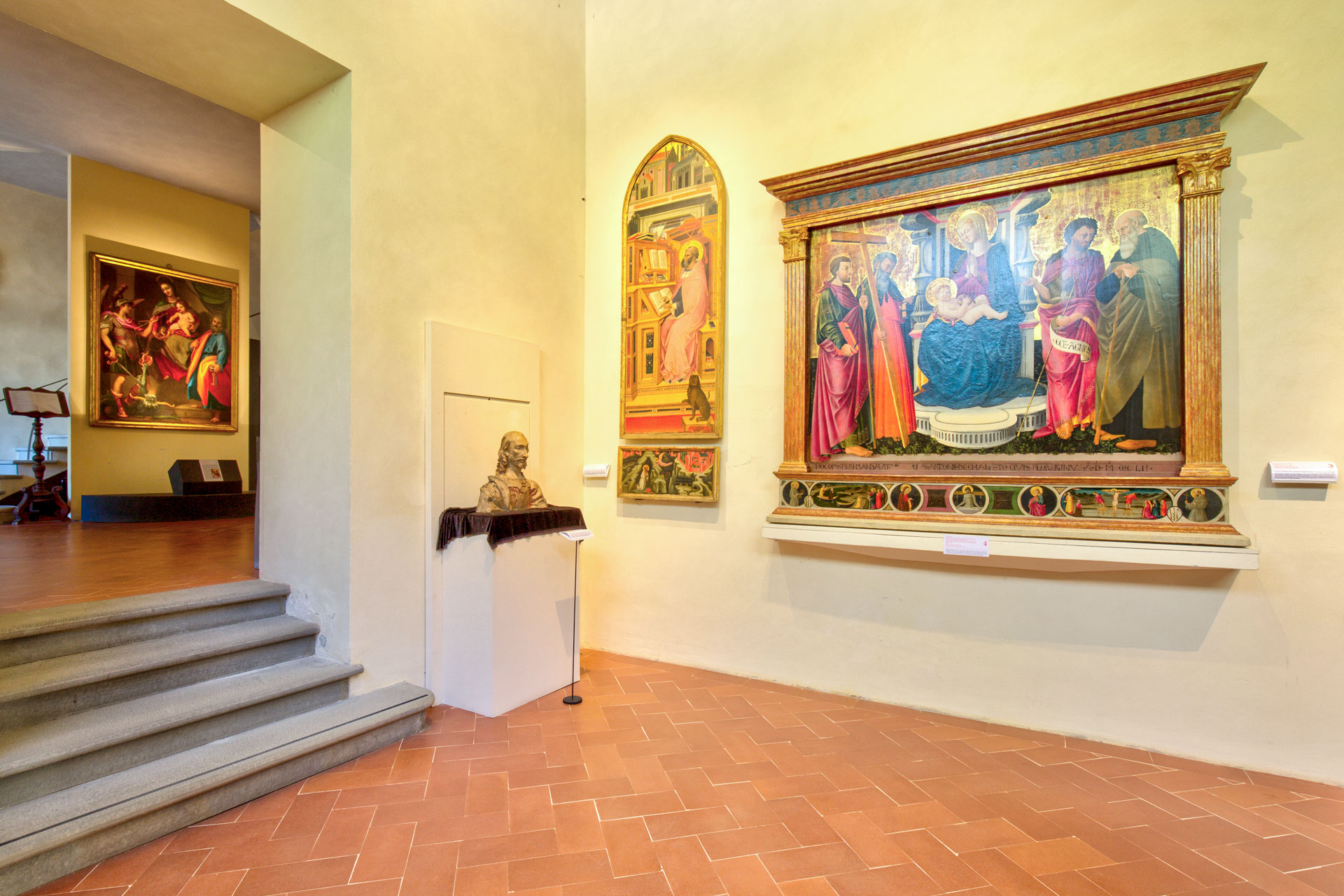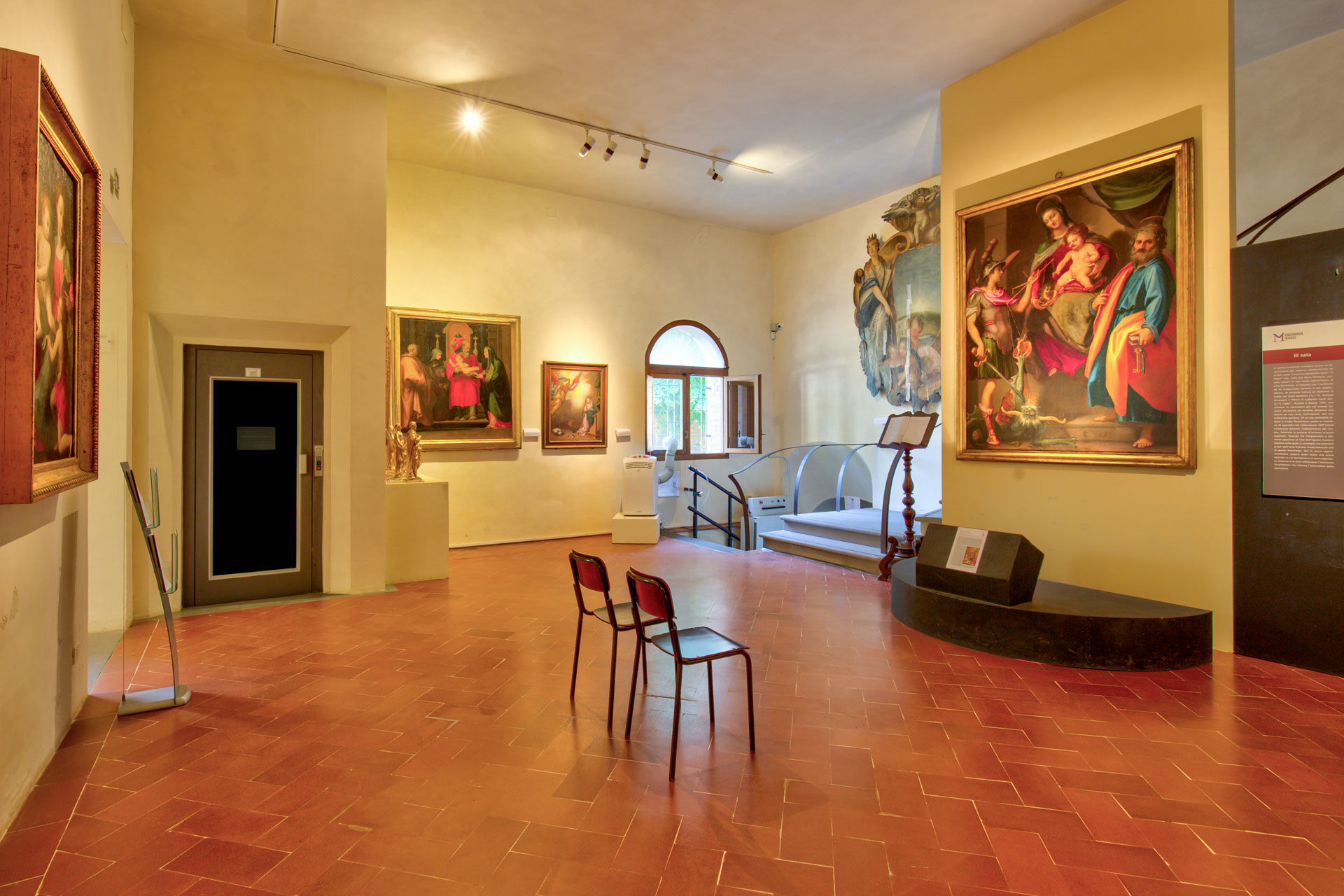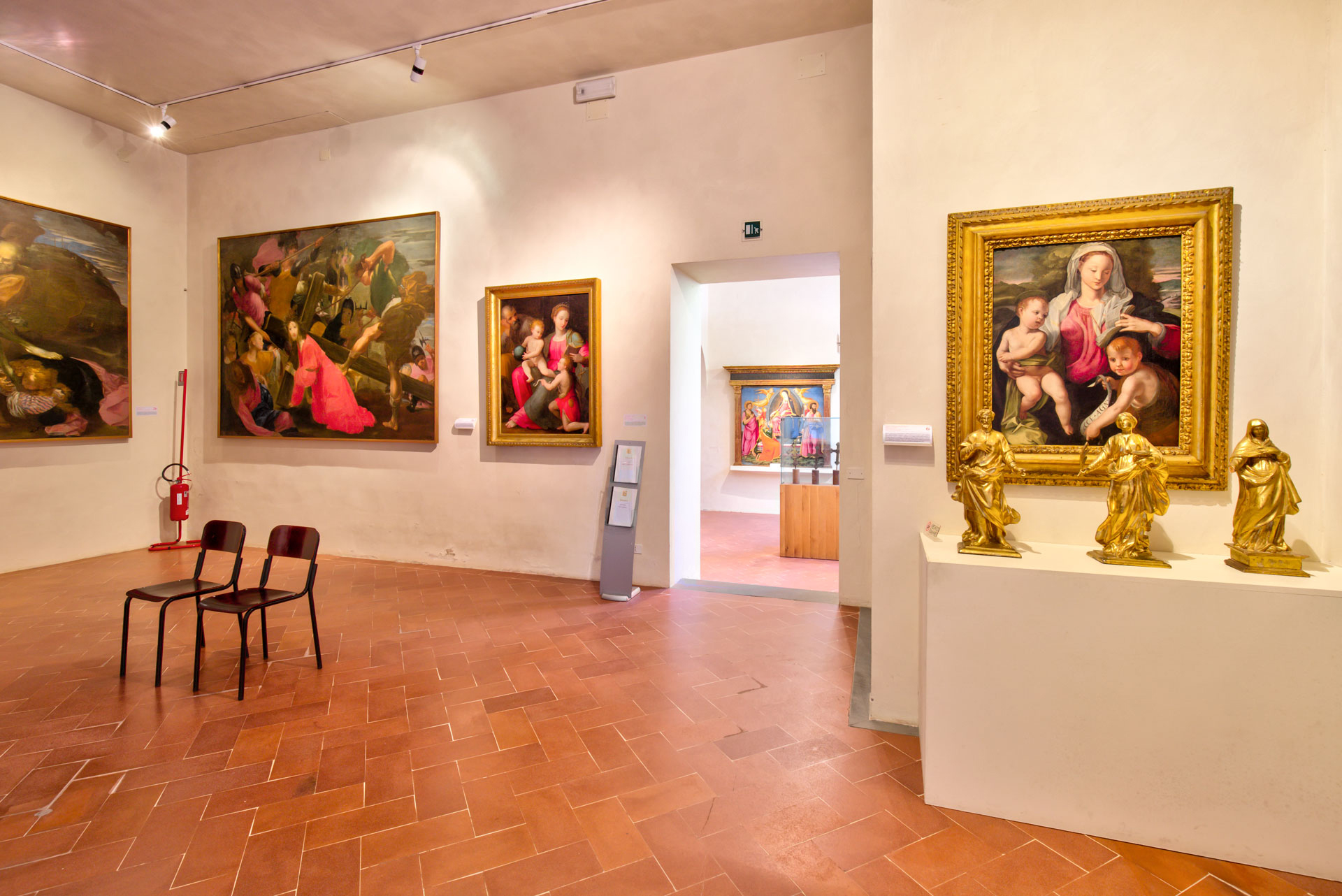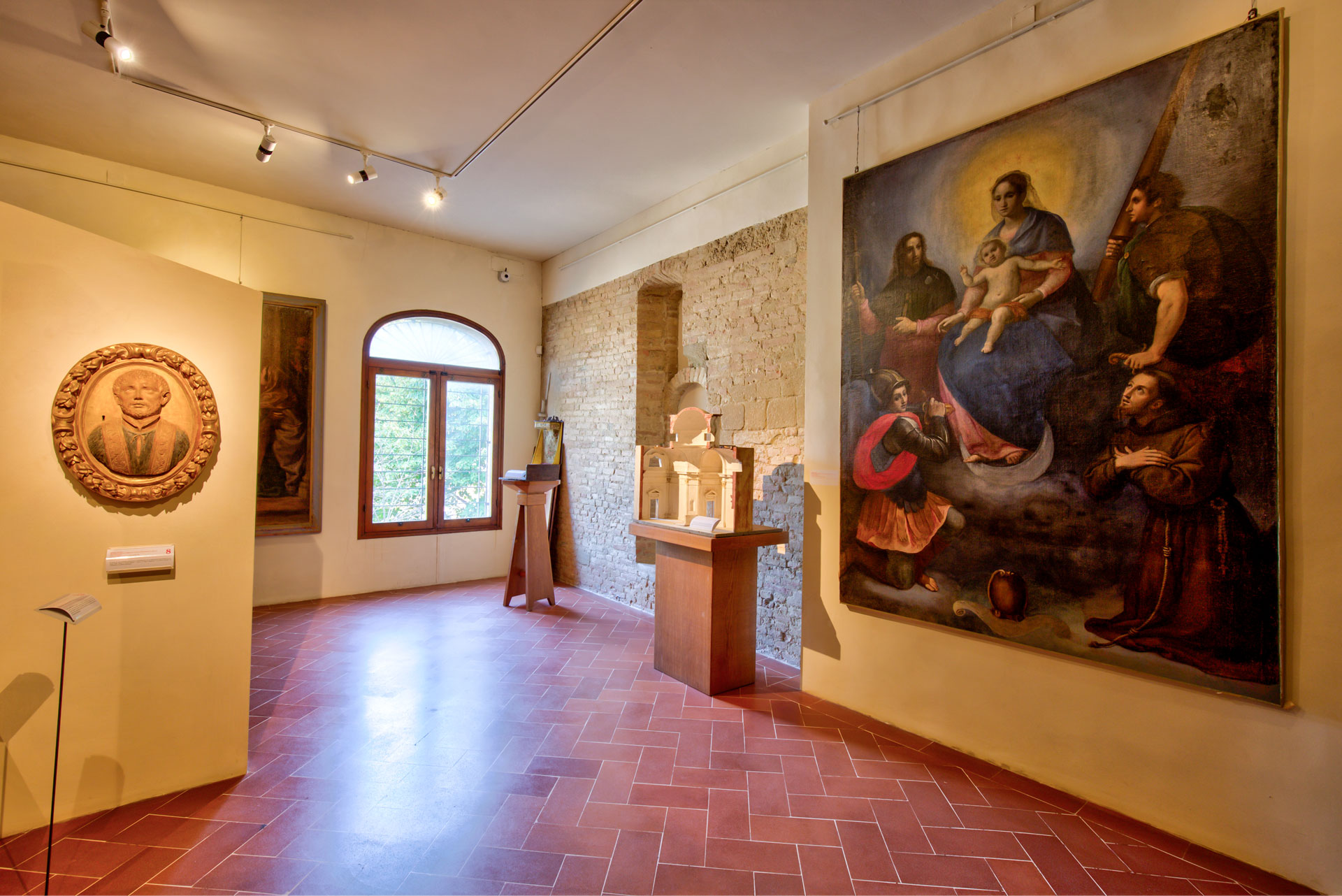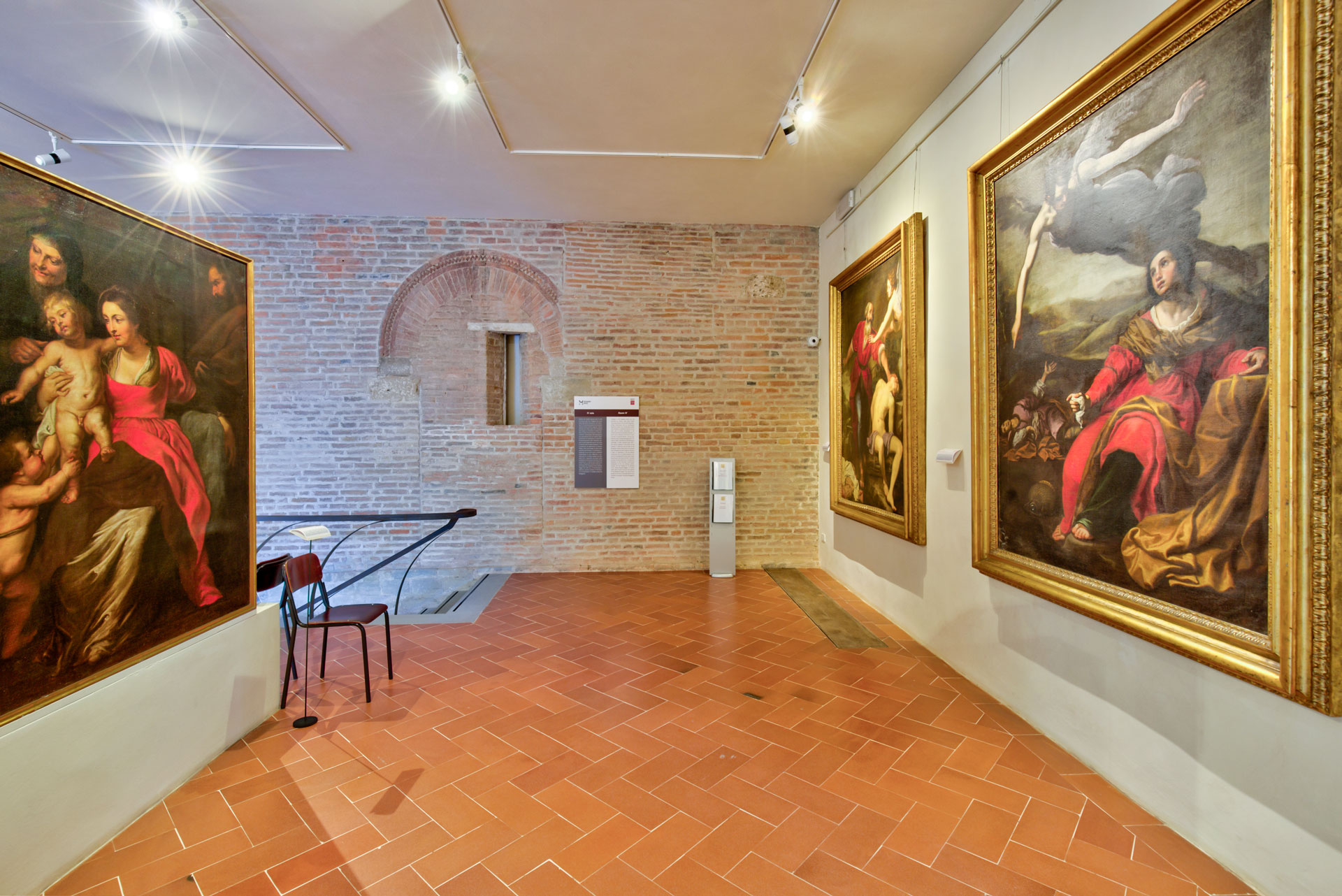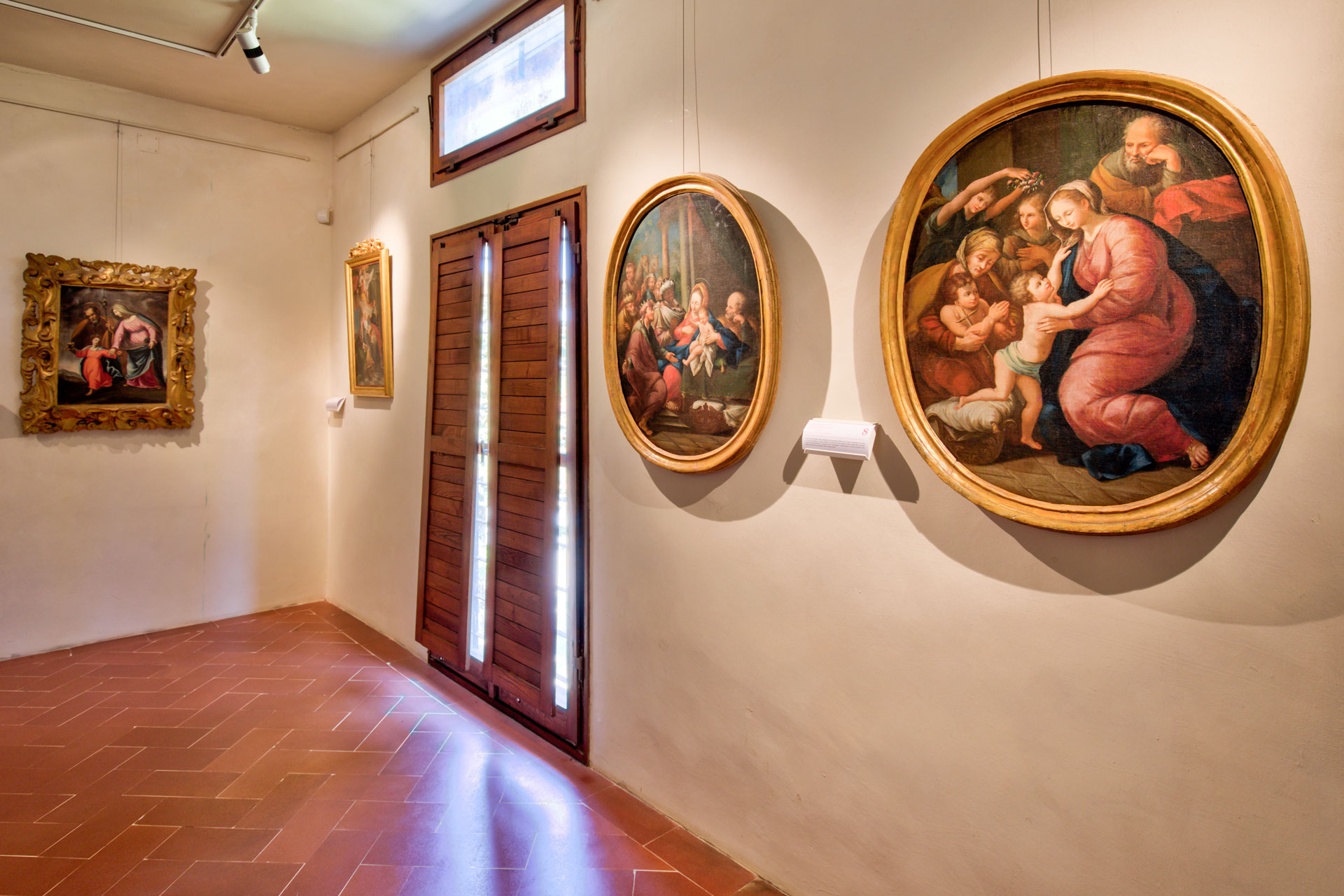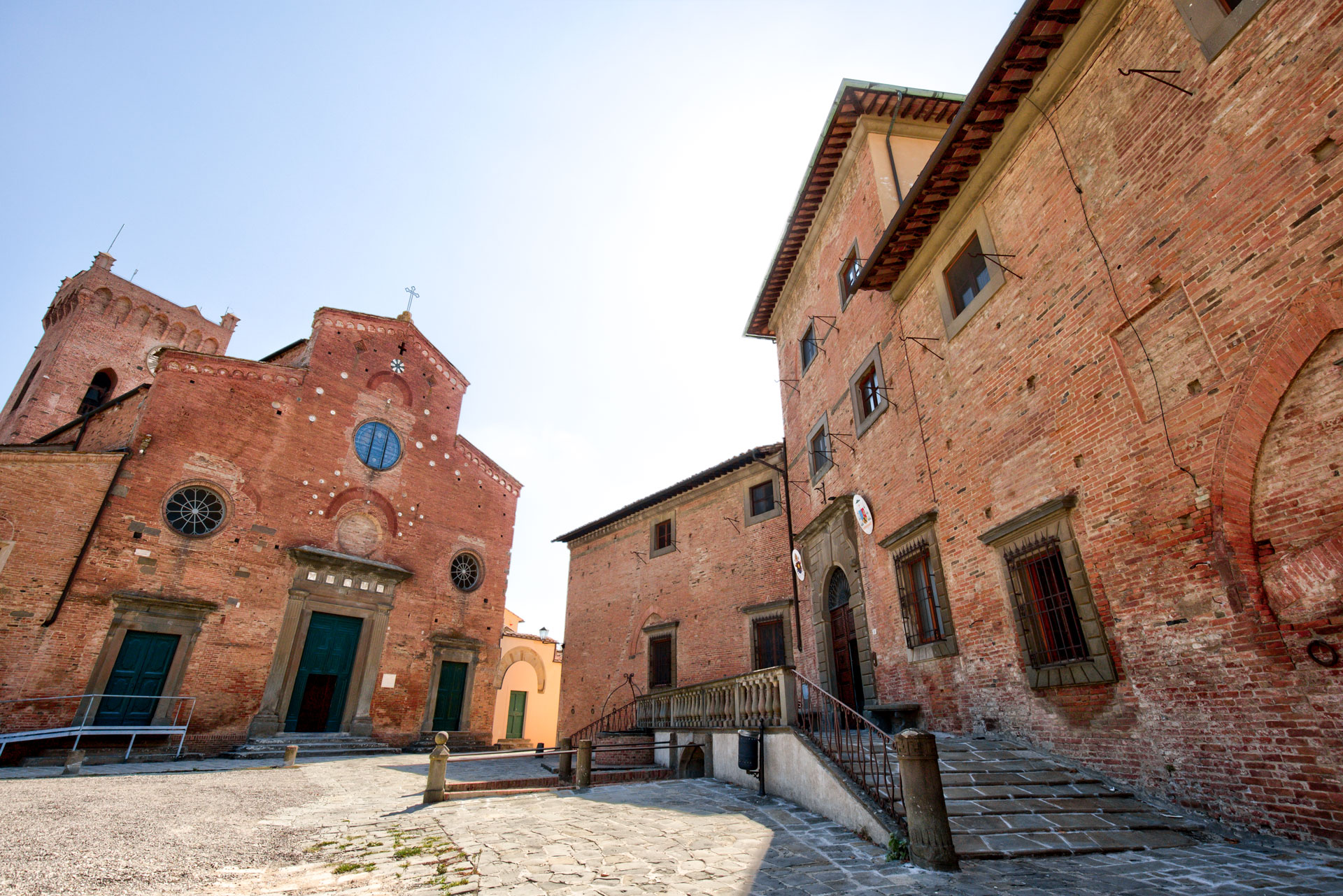The Diocesan Museum of Sacred Art
San Miniato
Il museo
The Diocesan Museum of Sacred Art of San Miniato (Province of Pisa) was founded in 1966 by local organizations and personalities and through the direct personal contribution of Professor Dilvo Lotti.
It was one of the first diocesan museums in Italy and is located in Piazza del Duomo, itself architectural evidence of the former presence of the Swabian Emperors in the city. The exhibition centre is located in the premises that previously housed the sacristies of the church of Santa Maria Assunta and San Genesio. The latter is now the cathedral, which, as far as we know, dates back to 700 AD and which only took on its present appearance in the 20th century when San Miniato was in the orbit of Frederick II.
The five rooms which comprise the building hold around fifty works of art which come from several parishes in the Diocese. These are arranged chronologically from the 13th until approximately the 19th centuries.
These include sections removed from frescoes, wooden panels, bas-reliefs, wooden statues, bronze crosses, ceramic basins, canvases and a model in original scale depicting the church of SS. Crocifisso. Here we name some of the artists whose work you can admire: Maestro Francesco, Lorenzo Monaco, Rossello di Jacopo Franchi, Giroldo di Jacopo da Como, Jacopo di Mino del Pellicciaio or “Maestro degli Ordini”, Borghese di Pietro Borghese, Cenni di Francesco di Ser Cenni, Agnolo di Polo pupil of Verrocchio, Ludovico Cardi known as “il Cigoli”, Jacopo Chimenti known as “l’Empoli”, Lorenzo Lippi, Filippo Paladini, Giovanni Bilivert, Domenico Crespi known as “il Passignano”, Gianbattista Tiepolo, Camillo Sagrestani, Andrea Bonechi.
Introduction
The Diocesan Museum of Sacred Art of San Miniato is an institution that dates back to 1966, although it was conceived of rather earlier than that. After the Second World War, the precarious state of conservation of its cultural heritage prompted the Episcopal Curia and Pisa’s archaeological superintendents’ office to launch a campaign to restore and safeguard these works. The former sacristies of the Cathedral were turned into a museum, and a collection of artworks from the various parishes of San Miniato and its environs was brought together here. The museum is therefore very much an art gallery closely connected with local life, both religious and civic, in this small community of Tuscany.
Room I
The works of art are arranged in the five rooms of the museum chronologically from the 13th to the 18th century. On entering Room I, in fact, the visitor can make out the unmistakable signs of a world still partly medieval, full of symbolism, gold backgrounds and hieratic figures of Saints. The fragments of the fresco by Maestro Francesco, the surviving panels of some polyptychs attributed to Jacopo di Cione, Pseudo Ambrogio di Baldese, Rossello di Jacopo Franchi and Lorenzo Monaco, tell of this religious vision at once mystical but yet ready to embrace the new aspirations emanating from the imminent arrival of Humanism. The Antiphonary of the miniaturist Neri da Rimini itself evokes a Giottesque atmosphere in its attempt by using perspective to give depth to the page of a text. The processional band attributed to Jacopo di Michele called “il Gera” appear suspended between tradition and innovation, as does the Annunciation of the Lombard stonemason Giroldo di Iacopo da Como, dated 1274: its original composition places the two main figures, the Madonna and the Archangel Gabriel, one in front of the other, both intent upon a kind of comic book dialogue, part of which is still legible.
Room II
The spirit of Humanism is certainly more alive in this corner of the museum: the two panels of Neri di Bicci transport us towards the Renaissance. By this time, he was already setting his characters against backgrounds with a clearly visible perspective, very similar to the one where we find Saint Jerome taken by surprise in the occupation that is most congenial to him: that of the copyist. The same is true of the composition by Pier Francesco Fiorentino, in whose panel the protagonists seem to have fallen into a flowering meadow, an aspect redolent of Botticelli. The collection of ceramic basins of African origin from the end of the 12th century, originally used to decorate the facade of the cathedral as suggested by a local architectural custom of Pisan influence, dates back to the Middle Ages. Three processional crosses made of copper and bronze by anonymous master craftsmen and dated to around the middle of the 14th century are displayed in the centre of the room. Finally, the visitor cannot fail to notice the terracotta bust, entirely in polychrome, of the Redeemer, attributed to a certain Agnolo di Polo de Verri, a pupil of Andrea di Michele di Francesco di Cione better known as “il Verrocchio”.
Room III
On entering Room III, the visitor experiences the Renaissance at its height as exemplified by artists such as Francesco Morandini known as “il Poppi” who in his Holy Family offers up stylistic features of late Mannerist type from the Florentine area in keeping with the ambience he encountered during his apprenticeship. The Madonna On Throne With The Child Jesus between Saints Michele Arcangelo and Pietro by Ludovico Cardi known as “il Cigoli” and signed and dated 1593, is exquisitely painted and guides the viewer to the world of Baroque, through a pictorial realism with a certain inclination towards sumptuous grace. Probably the work of one of his students, the Cross-Holder Christ, was placed as a door in the tabernacle of the altar rebuilt during the preparation of the museum adjacent to the staircase leading to the upper floors. The canvases of the unknown Nordic master, with their features of both Italian Renaissance and Flemish art, appear to be suspended between the 16th and 17th centuries. Here the representation of the sacred appears almost like a theatrical scene in which emotional involvement is at its height and the light is the object of intense central focus that captures the attention of the viewer.
Room IV
The two canvases by Lorenzo Lippi that depict two scenes from the Old Testament are fully immersed in the Baroque world: strong chiaroscuro and an accentuated plasticism denote the high artistic level achieved. The Visitation by Matteo Rosselli is clearly a painting anchored in the solid rules of sacred iconography. The Death of St. Francis, by Giovanni Bilivert, by departing from the more conventional setting of his master Cigoli helps to identify its authorship. A portable altar of the 18th to 19th centuries is displayed in this corner of the museum. It bears the coat-of-arms of the Bonaparte family, which suggests that it belonged to Canon Filippo, then a leading figure in the community of San Miniato. Of equal interest for its rarity is the 18th-century scale model depicting the sanctuary of SS. Crucifix, an important document of Florentine architectural output of the late Baroque period. By contrast, the San Galgano, painted Giovan Battista Ruggeri from Bologna around 1650, harks back in time to the deeds of the medieval knights. The coat-of-arms at the foot of the knight clearly identifies the client: the Sienese family of Bonaggiunti.
Gallery
Museum catalog
INSERIRE IL CATALOGO DEL MUSEO……..
.
.
.
.
.
.
Info
Open from 1 October to 31 March
Thursday: from 2 p.m. to 4 p.m.
Friday: from 9 a.m. to 1 p.m. and from 2 p.m. to 4 p.m.
Saturday: from 9 a.m. to 1 p.m.
Sunday: from 9 a.m. to 1 p.m.
Open from 1 April to 30 September
Every day from 9 a.m. to 1 p.m. and from 2 p.m. to 4 p.m.
The Museum is closed on the following public holiday dates:
1 January, 6 January, Easter, Easter Monday, 15 August, 1 November, 8 December, 25, 26 and 31 December.
The museum is open as usual on all other public holidays, provided that these do not fall on days when the Museum is otherwise normally closed.



